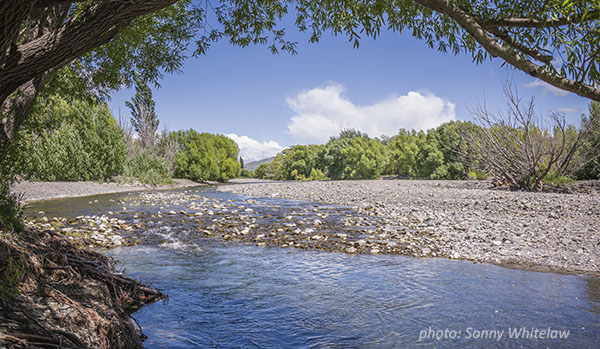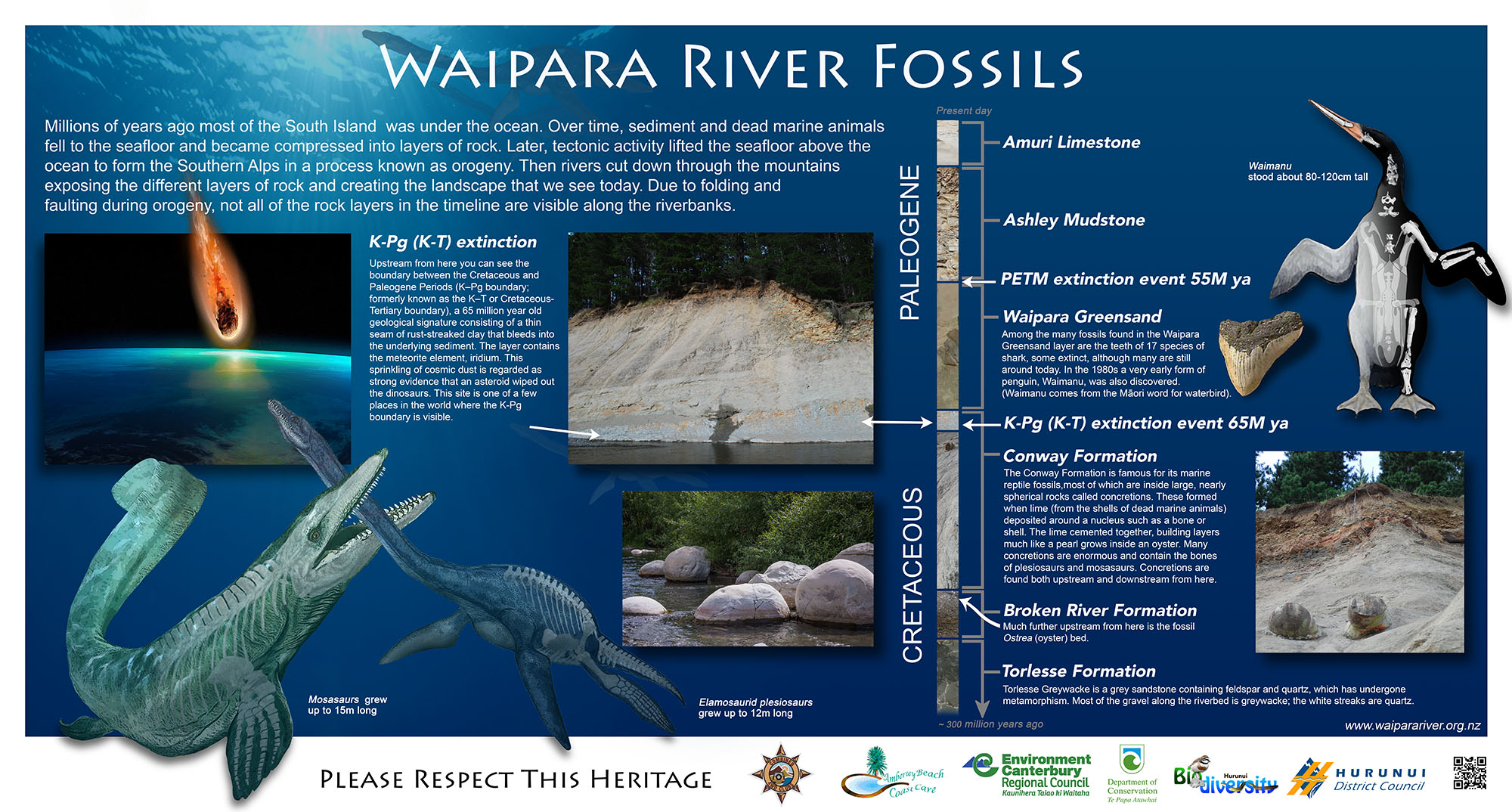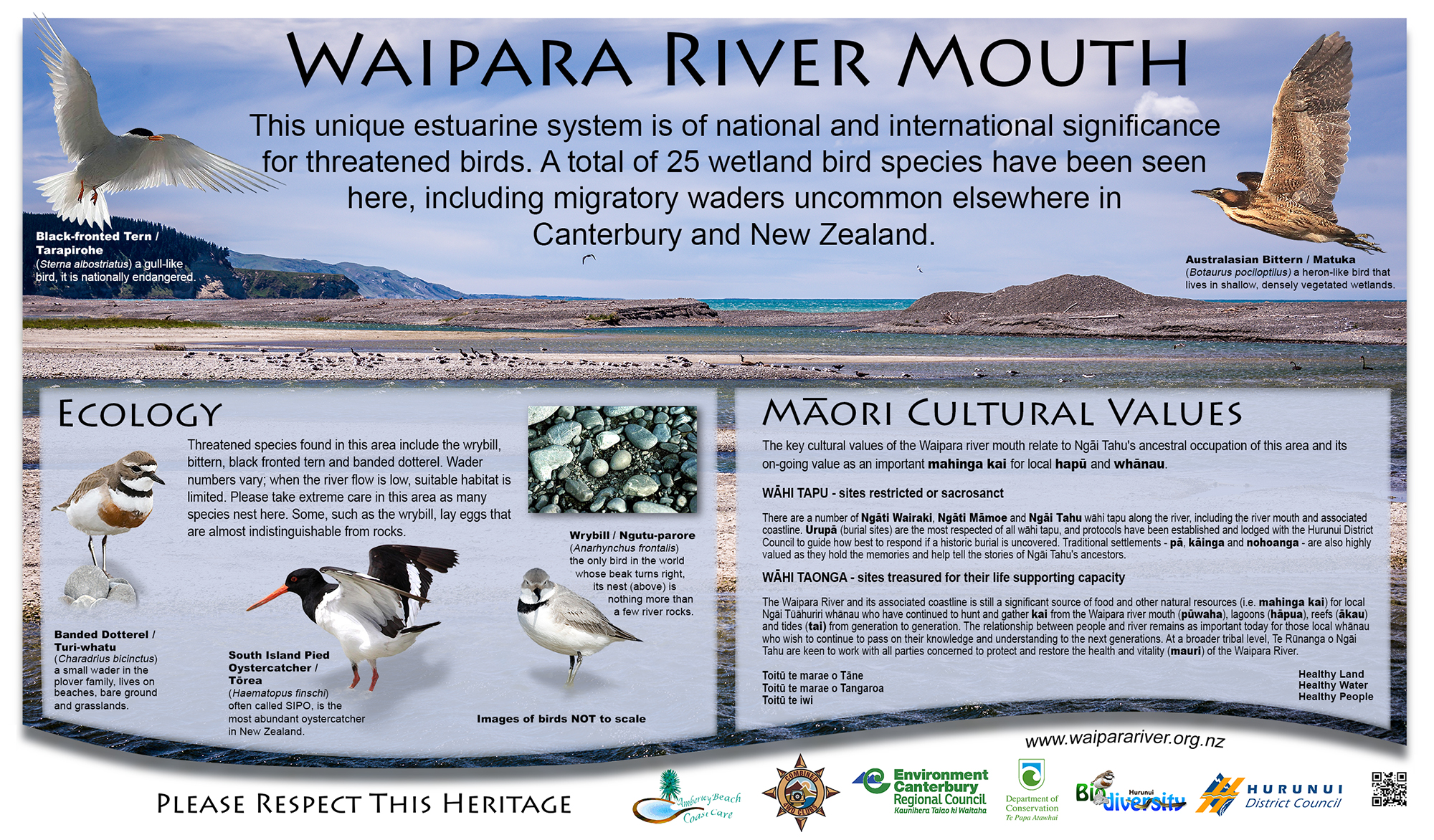Waipara River
The Waipara River is a small hill-fed river on the northern fringe of the Canterbury Plains. Its geological and climatic features set it apart from most other hill-fed rivers in Canterbury.

Situated in a warm dry micro-climate, the river is prone to long periods of low flows during summer and autumn that frequently lead to nuisance growths of algae. The presence of limestone and sandstone sediments in parts of the catchment result in waters that are naturally phosphorus enriched.
Water flow
- River Report 24-hour Infoline: river flows (updated twice daily), rainfall, sign up for text alerts
- Catchment map and monitored sites include scientific indicators for water quality (LAWA: Waipara River)
Conservation activities
The estuary is nationally and internationally significant, and geologically outstanding on a global scale. In spite of this and several years of community consultation resulting in this management plan, no conservation activities have been undertaken other information signs, many of which have since been removed or damaged. The river is now extremely degraded and polluted and the lower reaches regularly run dry over summer. See: ‘I am ashamed‘.
Biodiversity, geological, & cultural significance
It is one of the few places in the world where the K-Pg (formally the K-T) boundary, evidence of a comet that hit the Earth 65 million years ago and wiped out the dinosaurs, is visible. The river’s extraordinary fossil legacy includes huge marine reptiles inside giant ‘geological pearls’ known as concretions, as well as huge shells, the bones of ancient penguins, and teeth from enormous sharks.

The mouth of the river is an important breeding ground for rare and endangered birds wrybill, black-fronted tern, banded dotterel, and bittern. A 2000 assessment by the Department of Conservation ranked the river mouth and hapua (coastal lagoon) as being of national to international significance for threatened species, with more than 10% of the total population of the threatened species present. Along the upper tributaries are several vulnerable and endangered plant species.

Māori have long held an association with the Waipara River as it was once a significant mahinga kai and was part of the trading routes along the coast. Urupā (burial sites), waahi tapu (places of particular significance to local Māori that hold an element of sacredness), and waahi taonga (culturally, spiritually, physically and historically significant items) in close proximity to river.
The river and associated coastline was a significant mahinga kai, with kai moana (sea food), particularly paua, being taken at the mouth. The tūpuna had considerable knowledge of whakapapa (genealogy), traditional trails and tūranga waka (places for gathering food and taonga), ways in which to use the resources of the river, the relationship of people with the river and their dependence on it and tikanga (customs) for the proper and sustainable utilisation of resources.
References & research material
- Waipara River Management Strategy (PDF) | Waipara River management website (NB, email contacts on the main page may no longer valid)
- 2019: Mayr et al; Leg bones of a new penguin species from the Waipara Greensand add to the diversity of very large-sized Sphenisciformes in the Paleocene of New Zealand: Alcheringa: An Australasian Journal of Palaeontology.DOI: 10.1080/03115518.2019.1641619
- 2013: Vajdar& Raine; Pollen and spores in marine Cretaceous/Tertiary boundary sediments at mid‐Waipara River, North Canterbury, New Zealand. New Zealand Journal of Geology and Geophysics 46(2):255-273.
- DOC catalogue of scientific publications: enter the relevant search terms in the ‘search’ dialogue box. You may need to vary your search, for example ‘black stilt’ gives far more results than ‘kaki’ or ‘kakī’
- ECan document library: enter ‘Waipara’ in the ‘keywords’ search field at the top of this page
- See Rivers for a more comprehensive list of braided rivers research and reference material
